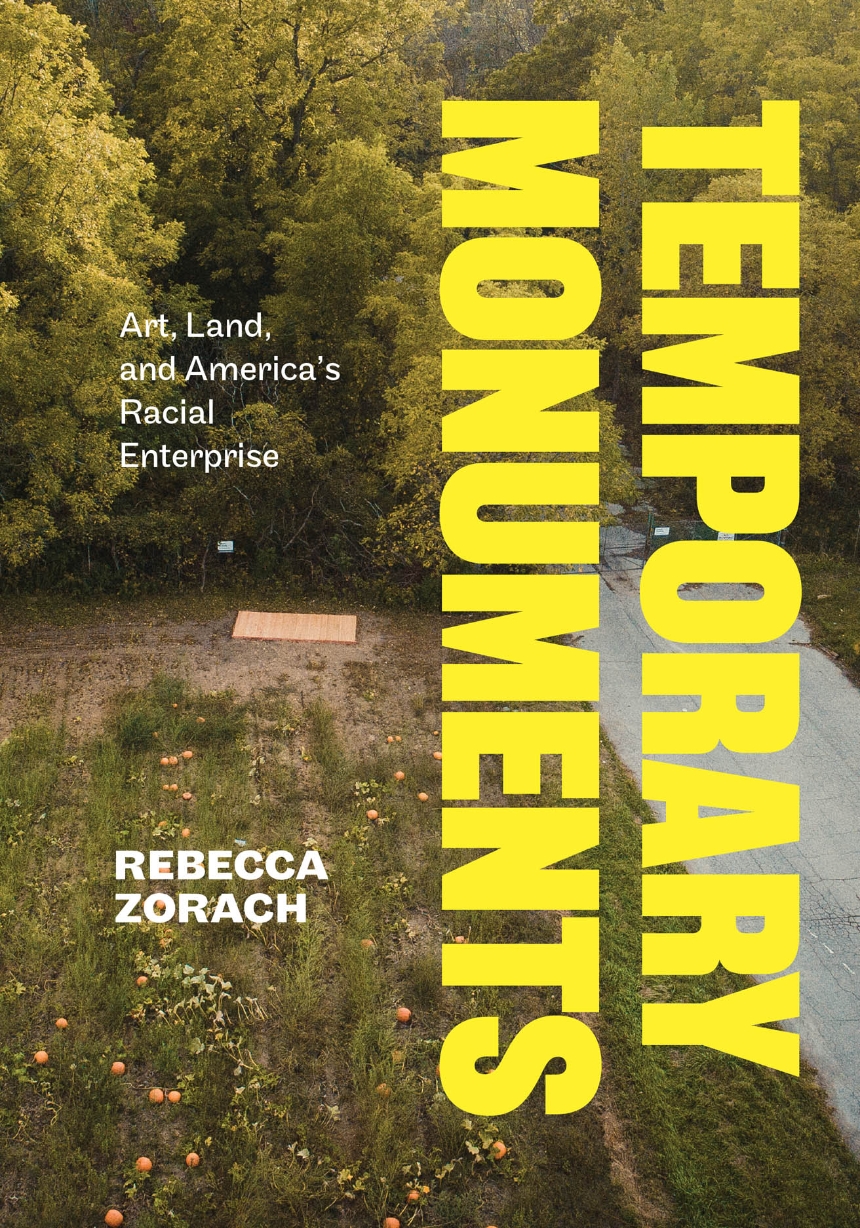Temporary Monuments
Art, Land, and America’s Racial Enterprise
9780226831015
9780226826875
9780226831008
Temporary Monuments
Art, Land, and America’s Racial Enterprise
How art played a central role in the design of America’s racial enterprise—and how contemporary artists resist it.
Art has long played a key role in constructing how people understand and imagine America. Starting with contemporary controversies over public monuments in the United States, Rebecca Zorach carefully examines the place of art in the occupation of land and the upholding of White power in the US, arguing that it has been central to the design of America’s racial enterprise. Confronting closely held assumptions of art history, Zorach looks to the intersections of art, nature, race, and place, working through a series of symbolic spaces—the museum, the wild, islands, gardens, home, and walls and borders—to open and extend conversations on the political implications of art and design.
Against the backdrop of central moments in American art, from the founding of early museums to the ascendancy of abstract expressionism, Zorach shows how contemporary artists—including Dawoud Bey, Theaster Gates, Maria Gaspar, Kerry James Marshall, Alan Michelson, Dylan Miner, Postcommodity, Cauleen Smith, and Amanda Williams—have mined the relationship between environment and social justice, creating works that investigate and interrupt White supremacist, carceral, and environmentally toxic worlds. The book also draws on poetry, creative nonfiction, hip-hop videos, and Disney films to illuminate crucial topics in art history, from the racial politics of abstraction to the origins of museums and the formation of canons.
Art has long played a key role in constructing how people understand and imagine America. Starting with contemporary controversies over public monuments in the United States, Rebecca Zorach carefully examines the place of art in the occupation of land and the upholding of White power in the US, arguing that it has been central to the design of America’s racial enterprise. Confronting closely held assumptions of art history, Zorach looks to the intersections of art, nature, race, and place, working through a series of symbolic spaces—the museum, the wild, islands, gardens, home, and walls and borders—to open and extend conversations on the political implications of art and design.
Against the backdrop of central moments in American art, from the founding of early museums to the ascendancy of abstract expressionism, Zorach shows how contemporary artists—including Dawoud Bey, Theaster Gates, Maria Gaspar, Kerry James Marshall, Alan Michelson, Dylan Miner, Postcommodity, Cauleen Smith, and Amanda Williams—have mined the relationship between environment and social justice, creating works that investigate and interrupt White supremacist, carceral, and environmentally toxic worlds. The book also draws on poetry, creative nonfiction, hip-hop videos, and Disney films to illuminate crucial topics in art history, from the racial politics of abstraction to the origins of museums and the formation of canons.
296 pages | 16 color plates, 74 halftones | 7 x 10 | © 2024
Reviews
Table of Contents
List of Illustrations
Introduction: Temporary Monuments
1 Museum: “Abundantly Illuminated”
2 The Wild: Freedom, Slavery, and Desire
3 Islands: Looking for Indian Things
4 Garden: Violence and the Landscapes of Leisure
5 Home: Color, Abstraction, Estrangement, and the Grid
6 Walls and Borders: Place Holding
Acknowledgments
Notes
Bibliography
Index
Introduction: Temporary Monuments
1 Museum: “Abundantly Illuminated”
2 The Wild: Freedom, Slavery, and Desire
3 Islands: Looking for Indian Things
4 Garden: Violence and the Landscapes of Leisure
5 Home: Color, Abstraction, Estrangement, and the Grid
6 Walls and Borders: Place Holding
Acknowledgments
Notes
Bibliography
Index
